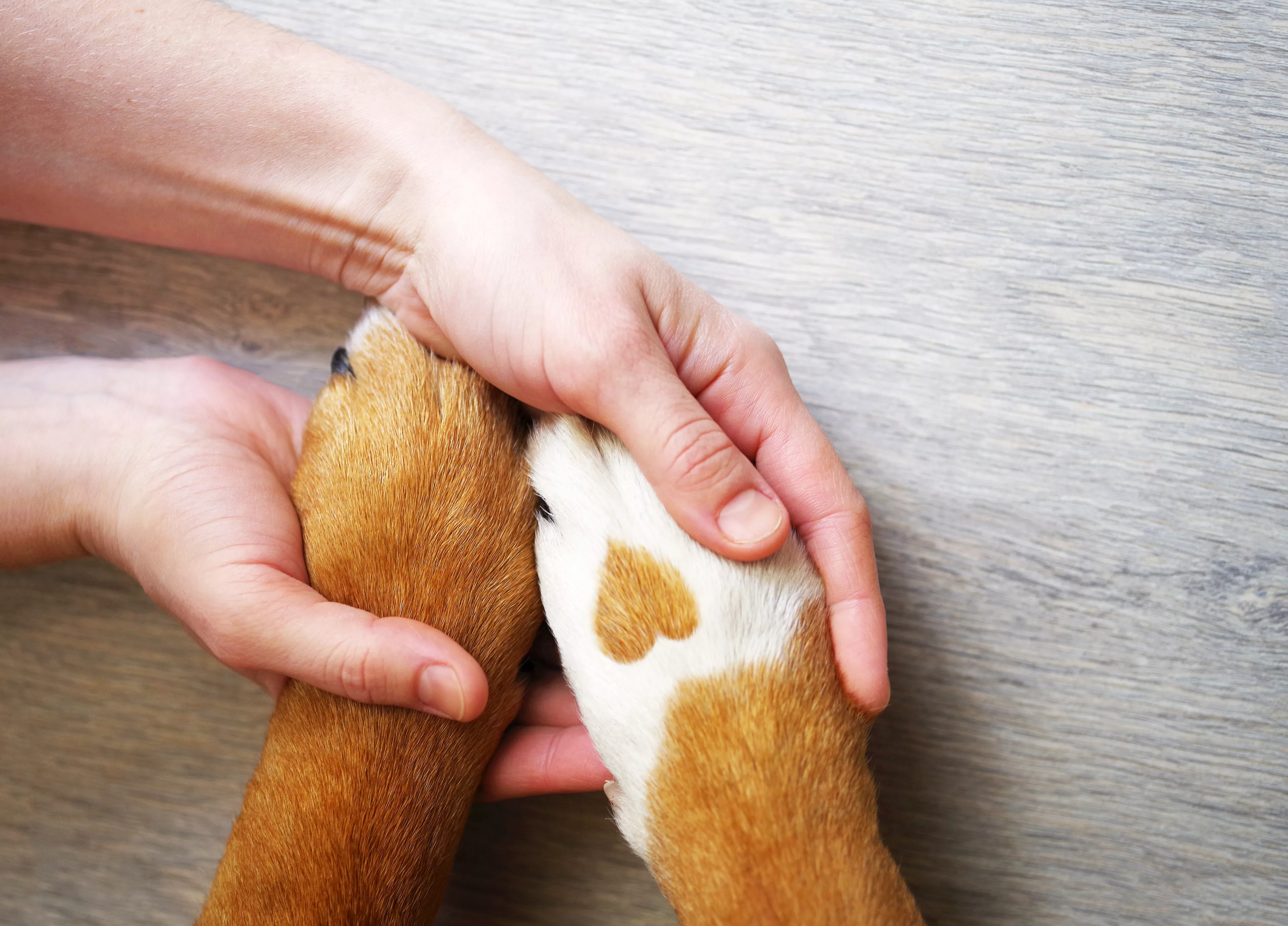
Across the country, high numbers of strays, a shortage of veterinary professionals, and the rising cost of veterinary care have made it difficult for animal rescue organizations to help animals in need. North Bay animal rescue organizations and veterinary offices are addressing the problems with collaborations, including sharing information, fundraising, training volunteers to perform tasks like administering vaccines, and planning for emergencies like wildfires.

Together, local nonprofits and veterinary care businesses are finding new ways to be creative and assist one another. Methods range from spotlighting an organization’s spay and neuter services to steering new owners to vets’ offices. The two groups are also finding new ways to work effectively with the University of California, Davis (UC Davis), home to one of the largest veterinary hospitals in the country. UC Davis assists the two groups in numerous ways, such as offering shelter training and performing complex veterinary medical procedures.
Usually, the beginning of a relationship between a rescue organization and a vet’s office starts with the rescue organization selecting a vet. Organizations typically look for vets who value compassion and avoid euthanasia unless absolutely necessary.
“Our mission is saving animals’ lives. We don’t let the financial picture become a factor in our decision. We’re prepared to do whatever we can up to a certain point,” says Deborah Blum, executive director and founder of Goatlandia in Santa Rosa. Goatlandia has two Sonoma County sites that are home to a wide range of animals, including chickens, cows, goats and two livestock guardian dogs.
After establishing a relationship, rescue organizations use fundraising to support their work and pay for veterinary care. Some fundraising is general, for all animals under the organization’s purview. Other fundraising is targeted—on one animal or a set of animals with a specific condition. The success of an operation or effort can highlight a vet’s skill.
“Our work requires deciding which animals are most in need,” says Charlotte Tunstall Pearce, a founding board member and volunteer with Dogwood Animal Rescue in Santa Rosa. “That is a hard choice. Usually, it’s the dogs on the euthanasia list at overcrowded shelters. We also accept dogs with serious injuries like a fractured pelvis or a gunshot wound. We believe they deserve a chance at recovery and adoption too.” Dogwood places dogs and cats in foster homes and arranges adoptions.
When vets and rescue organizations work together, they can take steps to prevent overpopulation, increase animal health and limit the displacement of animals during emergencies. Significant services include spay and neuter, owner education, microchipping, flea and tick prevention and vaccines, says Ashley Armstrong, executive director of We Care Animal Rescue in St. Helena. We Care is currently home to cats, dogs and rabbits.
“Also [joint efforts help] organizations can get medical grants or donations from the community. Then we can hire vets to help our animals in unanticipated ways. This is how we were recently able to help a number of older cats get dental care to improve their quality of life,” says Armstrong.
Vets needed: a national issue made local
The U.S. is currently experiencing a veterinary shortage. Approximately 2,000 vets retire per year, and American schools graduate only about 2,550 new vets every year, according to a 2022 study by Mars Veterinary Health, the world’s largest provider of veterinary care.
The projected healthcare needs for companion animals like dogs and cats alone will require over 41,000 vets to enter practice in the next decade. The current estimate suggests the country will run short of 15,000 vets just for companion animals by 2030.
Causes of the problem include the early retirement of older vets during the COVID-19 pandemic, the high cost of a degree for a Doctorate of Veterinary Medicine (DVM), with tuition and fees currently at $34,000 per year for California residents at UC Davis, and high dropout and suicide rates for the profession. The data come from a 2023 study from the National Institutes of Health and multiple studies from the Journal of the American Veterinary Medical Association.
Californians are particularly feeling the effects of the shortage. A little over 40% of California households own a companion animal. Approximately 23% of California households own a cat and close to 40% own at least one dog, according to a 2020 report from Pawlicy Advisor, a national marketplace for finding companion animal insurance. Since California leads the country in agricultural production, its ranches, farms and farm animal rescue organizations will suffer as well.
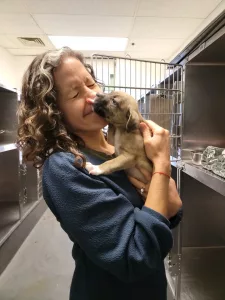
The COVID-19 pandemic also contributed to the vet shortage by inducing a “companion animal boom.” Approximately 31 million households adopted a dog or cat in the months after March 2020, according to a 2021 study by the American Society of Prevention of Cruelty to Animals. Vets then became busier than they were before the pandemic, according to 2021 research by the American Veterinary Medical Association.
In addition, the cost of veterinary care has gone up. Between 2022 and 2023 alone, prices jumped by 11%, according to a July 2023 report by Forbes magazine. The increases are due to inflation, higher costs for veterinary medicines, higher levels of care, particularly for senior animals, and the vet shortage, explained as the need to pay more for vet services to be competitive.
The combination of all of these factors explains why animal rescue organizations now pay high costs for each animal on their roster. There is no standard cost because animal patients have unique medical situations and vets charge different prices.
Vets often give nonprofits a discount on services. Still, each animal’s cost of treatment adds up to a figure that influences what services the nonprofit will offer. It also affects the total number of animals the organization can treat. The costs also play into the number of animals the nonprofit will offer for adoption and its standard donation request from a new owner.
Other phenomena, like climate change, are important as well.
“Female cats come into heat when temperatures are warmer. As temperatures rise, there’s been no set ‘kitten season,’ which used to last from March to October. This is part of why we do a spay and neuter clinic two to three times a week,” says Pip Marquez de la Plata, executive director of Forgotten Felines of Sonoma County , a cat spay and neuter organization in Santa Rosa.

Forgotten Felines contracts with a pool of vets for its internal clinics where alterations and other medical issues are handled. It uses outside vets when more complicated or longer-term medical care is required.
“To give you an understanding of how important vet services are to our mission, close to half of our annual budget is for veterinary services and supplies. We ask for a donation of $50 for spay and neuter but this is a fraction of the price. It costs us close to $375 just for each spay or neuter alone,” says Marquez de la Plata.
Dr. Christi Camblor is the cofounder and a veterinarian for Compassion Without Borders, a Santa Rosa-based organization that does rescue, rehab and rehoming of dogs in the U.S. and Mexico. The organization also provides free and low-cost veterinary services to underserved community members. Camblor says the high cost of living in the North Bay makes it harder for the organization to provide services in Sonoma County.
“Generally, vet nurses and vet techs are priced out of this area. Also, for-profit hospitals come in and offer wages we can’t match. I often run a mobile clinic in Roseland, where I can see close to 100 animals in a day. That is amazing and we are glad to have so much support from the community. I could do more if I had more staff,” says Camblor.
Yet animal rescue nonprofits and vet offices still find ways to help each other thrive.
Dr. Jessica Klein, veterinarian and owner of Wine Country Veterinary Hospital in Windsor, partners with Greyhound Friends for Life in Fulton and German Shepherd Rescue in Santa Rosa.
She says animal rescue organizations are natural allies for veterinary offices.
“My office has been open for seven years. Greyhound Friends for Life is client number four on my list. When we opened, they gave us a lot of work. It has been wonderful to partner with a rescue organization that values high-quality medicine. It’s also an honor to treat the German Shepherds that served as work dogs for law enforcement officers,” says Klein.
Dogwood uses the services of two Sonoma County veterinary offices. Tunstall Pearce recommends these businesses to new companion animal owners.
“There’s that familiarity. The vet knows the animal and has built trust with it. The new owner also trusts the vet because we chose to work with the vet. It’s a win for the animal and the vet,” says Tunstall Pearce.
We Care works with two Napa County veterinary offices. Armstrong praises these offices to new companion animal owners.
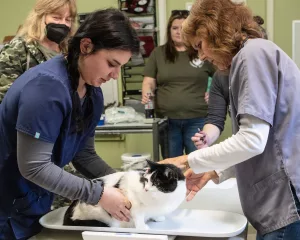
“Those vet offices also see a plus in forming a relationship with us and our adopters when we need specialty care for an animal. For example, we will send animals to them for significant operations for which we have done targeted fundraising,” says Armstrong.
Caring for farm animals
Organizations that treat and rescue farm animals like goats and horses function differently than those that see companion animals.
“We do not spay female goats, but we castrate male goats. Castration at too early of an age can be risky because it predisposes male goats to urinary stone blockages. In addition, our goats live on-site in fenced areas, which limits their interaction with other goats,” says Deborah Blum, of Goatlandia.
Goatlandia does not purchase prosthetic limbs for goats as they have not worked well in the past. The organization does utilize advanced diagnostics and innovative medical treatments in animal care.
Goatlandia partners with Sonoma Marin Veterinary Service and North Bay Farm Veterinary Service, both in Petaluma, for its large animals. It takes its chickens and dogs to Memorial Beach Veterinary Hospital in Healdsburg.
“Our vets teach us how to perform a lot of services, from taking the temperature of animals to administering vaccines. In return, vets sometimes call me for advice, asking me questions like, “What’s your senior goat protocol? What are you feeding them?” I’ve often been asked to assist with surgery on goats, too,” says Blum.
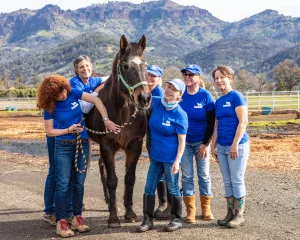
Sonder currently sees horses and other animals with hooves from Tambourine Vaulters in Petaluma, Sunrise Horse Rescue in Calistoga, Loma Vista Farm in Vallejo, and Connolly Ranch and Jameson Animal Rescue Ranch, both in Napa.
Sonder says it is important for organizations that oversee herd animals like horses to place an emphasis on protecting the group from causes of disease, like viruses. Herd animals depend on other animals for social interaction. A sick animal is likely to spread an infection through a population.
Having contact and familiarity with nonprofits allows vets to be a resource for the community. Sonder is also the president and a cofounder of Napa County’s Community Animal Response Team (CART). There are approximately 26 formal CARTs in California counties, which assist with care and feeding of animals affected by disasters.
“I can’t imagine practicing veterinary medicine without organizations like Sunrise Horse Rescue and Jameson Animal Rescue Ranch,” says Sonder. “During the 2017 wildfires, so many people lost their homes. Since we worked closely with these nonprofits, we made arrangements for geriatric horses and special needs animals to go to their properties rather than stay at emergency shelters and experience stress. We’ve also worked with these organizations to distribute instructions for evacuations and templates to follow in case of emergency.”
Efforts at UC Davis support the North Bay
The UC Davis School of Veterinary Medicine provides a number of helpful services to animal rescue organizations in the North Bay. One of these is the Koret Shelter Medicine Program , a privately funded program with four components: a student training program, which provides services to northern California shelters and rescue organizations; California for All Animals, a grants program that provides funds to California shelters; Maddie’s Million Pet Challenge, which offers training in building programs to keep families and their pets together; and facility design consultations, to help facilities like animal shelters optimize animal health and welfare.
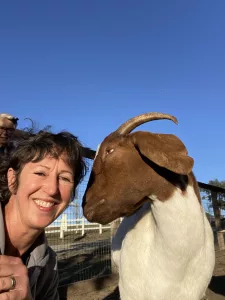
UC Davis’s proximity—about 75 minutes from Marin County, one hour from Napa County, and 90 minutes from Sonoma County—means help is close by.
“Currently, Sonoma County has a relatively low level of need for outside veterinary care in the event of a disaster. Marin and Napa counties have a moderate level of need for additional veterinary care in such an event. The North Bay counties are three of the more prepared counties with which we have worked,” says Will Burke, associate director of planning for CVET at UC Davis.
Burke adds CVET has been working with Cal Fire, fire response experts and the California Governor’s Office of Emergency Services on a combination of fire training and veterinary training. The idea is to reduce chaos during disasters and ensure minimal impacts on human and animal health during and after such events.
“CVET has learned from CARTs in the North Bay, about how the region has handled floods and fires. We also host the California CART Collective Summit, a meeting of CARTs throughout the state. This trains animal rescue organizations on the latest best practices,” says Burke.
Dr. Stacy Kraus is chief of service for the Koret Shelter Medicine Program. She says her team of professional veterinarians and DVM students currently works with six different nonprofits across five counties in northern California. Right now the focus is on spaying and neutering community cats. These are defined as outdoor, unowned, and free-roaming cats that can be antisocial or social around people.

“One of the organizations we work with is Whiskers, Tails & Ferals, a cat and dog rescue organization in Napa. We also offer microchipping, vaccination and treatment of fleas and ear mites. Assisting nonprofits with access to spay and neuter services is a great way to provide senior veterinary students exposure to community cat programs. The students get hands-on training in high-quality, high-volume spay and neuter techniques in cats, including feral and pediatric [very young] patients,” says Kraus.
Year after year, the shelter medicine and surgery student training program remains one of UC Davis School of Veterinary Medicine’s top-rated clinical rotations.
“This means recent veterinary graduates become comfortable working with animals living in a rescue or shelter environment. The experience acquired as a student should assist with future collaborative partnerships between animal welfare organizations and veterinarians,” says Kraus.
Allison Cardona, California state director of the California for All Animals program, says California for All Animals has provided grants to North Bay organizations. In 2023, California for All Animals awarded Jameson Ranch a grant to provide spay and neuter services. California for All Animals also gave a grant to the Humane Society of Sonoma County to train veterinarians in high-quality, high-volume spay and neuter techniques.
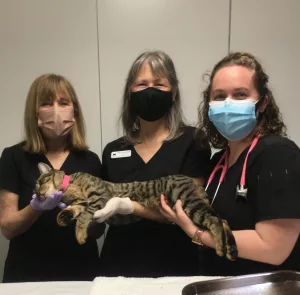
“We’re learning from shelters we have funded because they have community programs that are thoughtful and inclusive. They have multilingual staff and partner with social service organizations to offer low-cost, subsidized spay and neuter services,” says Cardona.
Frequent contact between UC Davis and animal organizations in the North Bay develops long-term sustainable relationships in the world of animal welfare. This strengthens the bonds between animal shelters, which need veterinary services. It also aids new vets who may come to the North Bay and experienced vets from the area, who share lessons learned from the floods and fires with professionals outside the region.
“California for All Animals helps animal shelters provide resources for the community,” says Cardona. “The grantees teach us a great deal too. We are in awe of the animal shelters and the veterinary teams that partner with them. The collaboration—despite so many staffing and economic challenges—is inspiring. Providing veterinary care and resources to keep pets in homes is a shared priority.”



